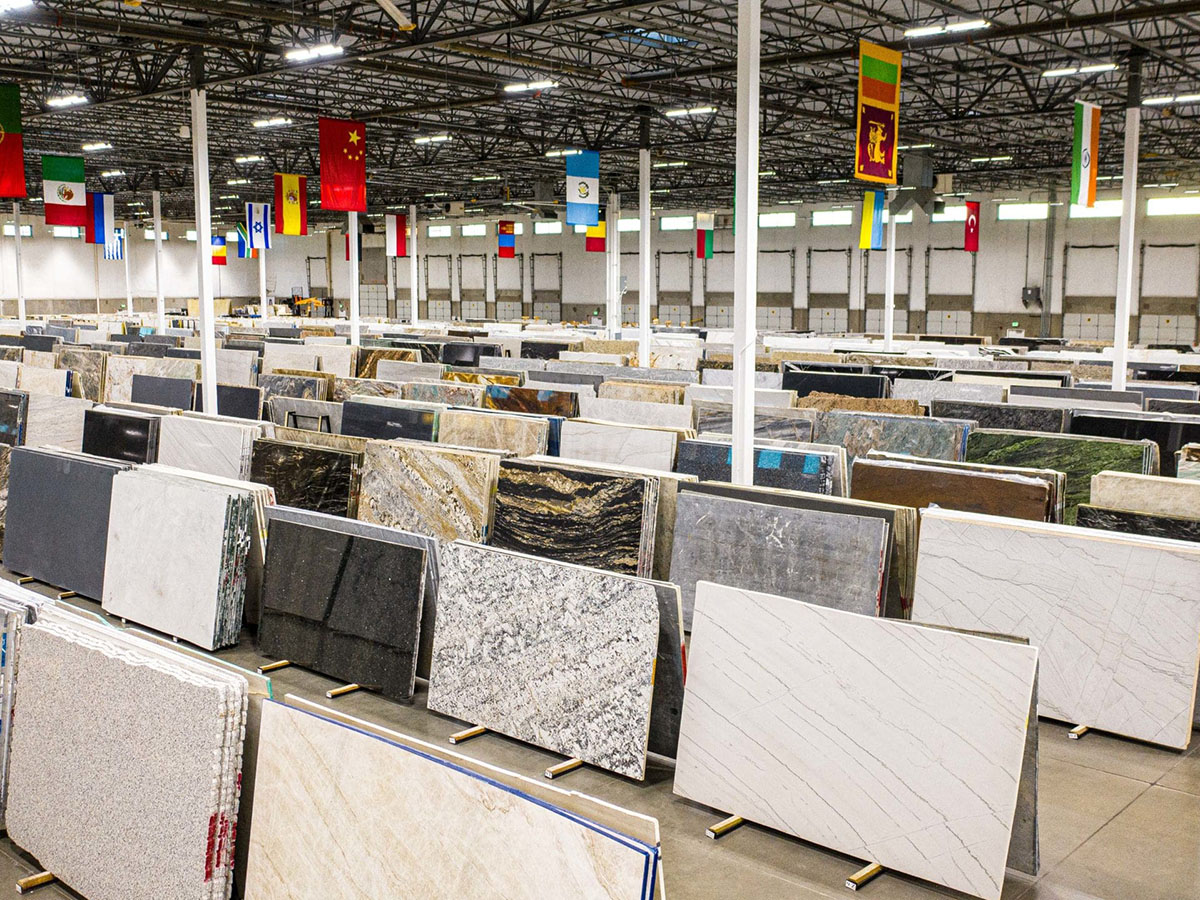
Distinguish Natural Stone from Artificial Stone
Natural stone and artificial stone are widely used in construction, interior decoration, kitchens, bathrooms, and more. However, many buyers and designers often struggle to differentiate between the two. As a professional natural stone manufacturer and exporter, Eonyx Stone, we have created this authoritative guide to help buyers accurately identify natural and artificial stones, avoid misunderstandings, and make informed decisions.
📢 Original Statement: This article is originally published by Eonyx Stone. You are welcome to repost it, but please include the original source and a link to the original page: https://www.eonyx.com/
🧭 Explore our stone product directories:
1. What Are Natural and Artificial Stones?
- Natural Stone: Formed naturally through geological movements deep within the earth’s crust, such as marble, granite, limestone, onyx, and quartzite. Each piece is a one-of-a-kind artwork of nature.
- Artificial Stone: Made by combining stone powder, resin, cement, pigments, or quartz sand through industrial processes. Common examples include engineered marble, engineered quartz, and synthetic stones.
2. Key Methods to Distinguish Between Natural and Artificial Stone
1. Visual Texture: Natural = Irregular; Artificial = Repetitive
- Natural Stone:
- Organic, flowing patterns with irregular directions;
- Visible color variations and unique personalities;
- For example, marble often has “cloud-like” veining, and granite shows “crystal clusters”.
- Artificial Stone:
- Often shows repeating patterns and symmetry;
- Lacks natural randomness and depth;
- Patterns may appear mechanical or too uniform.
📷 See examples: Marble Textures, Granite Textures
2. Touch and Temperature: Natural Stone Feels Cooler and Harder
- Natural Stone:
- Feels noticeably cold to the touch at room temperature;
- High hardness and scratch resistance;
- Clear, crisp sound when tapped.
- Artificial Stone:
- Feels warmer and less dense;
- Softer surface, easily scratched by keys or nails;
- Sounds dull or flat when tapped.
3. Gloss and Translucency: Natural Stone Has Depth; Artificial Stone Looks Synthetic
- Natural Stone:
- Polished surfaces reflect light with natural luster and depth;
- Some natural stones like onyx are semi-transparent and glow beautifully with backlighting.
- Artificial Stone:
- Gloss usually comes from resin coating, sometimes overly shiny and artificial;
- Poor light transmission, even in light-colored stones.
✨ Backlit designs? Try Onyx Stones.
4. Smell and Composition: Artificial Stone May Emit Chemical Odors
- Natural Stone:
- No smell, stable natural minerals;
- Pure compositions such as high-quartz-content quartzite – see Quartzite Stones.
- Artificial Stone:
- Newly made slabs often have a noticeable chemical or resin smell;
- Composition varies; some lower-end products may contain harmful substances.
5. Price Insight: Natural Stone Is Pricier but More Valuable
- Natural Stone: Pricing is affected by rarity, patterns, and origin; typically higher but with better resale and design value.
- Artificial Stone: Lower prices due to mass production, but limited in uniqueness and market prestige.
3. Buying Advice: Which Type Suits Your Needs?
- For premium aesthetics and natural beauty → Go for natural stones like marble, granite, or onyx.
- On a tighter budget → Engineered quartz is acceptable but avoid the lowest-grade products.
- For high-traffic areas → Granite and quartzite offer superior durability.
- For decorative backlit walls → Choose translucent stones like onyx.
4. Trusted Supplier of Natural Stone – Why Choose Eonyx Stone?
In the global stone market, factories with in-house production and export experience offer better reliability.
At Eonyx Stone, we specialize in high-quality natural stones. Our offerings include:
- Marble, granite, limestone, travertine, onyx, quartzite, and more;
- Stone slabs, countertops, tiles, sculptures, and project customizations;
- Support for custom cutting, export packaging, and global shipping.
5. Conclusion: Natural vs. Artificial – Choose Based on Purpose and Aesthetics
Natural stone is not just a material — it’s a piece of nature’s art. Its uniqueness and non-replicability give it long-term aesthetic and commercial value. Artificial stone, while useful in certain scenarios, lacks the depth and individuality of natural stone.
If you are looking for a trusted supplier of natural stone, feel free to explore our official website: https://www.eonyx.com/
📌 Reposting Notice:
This article is originally created by Eonyx Stone. When sharing, please credit the source and include the original link: https://www.eonyx.com/
Thank you for supporting quality content!
For high-resolution texture images, technical specifications, or price lists, feel free to contact us or email us at [email protected]. We will reply within 24 hours.
Contact Us
If you need any assistance, please feel free to contact us at any time. E-mail: [email protected] Phone/WhatsApp: 0086-15805032000 or filling out the form below, thank you.
